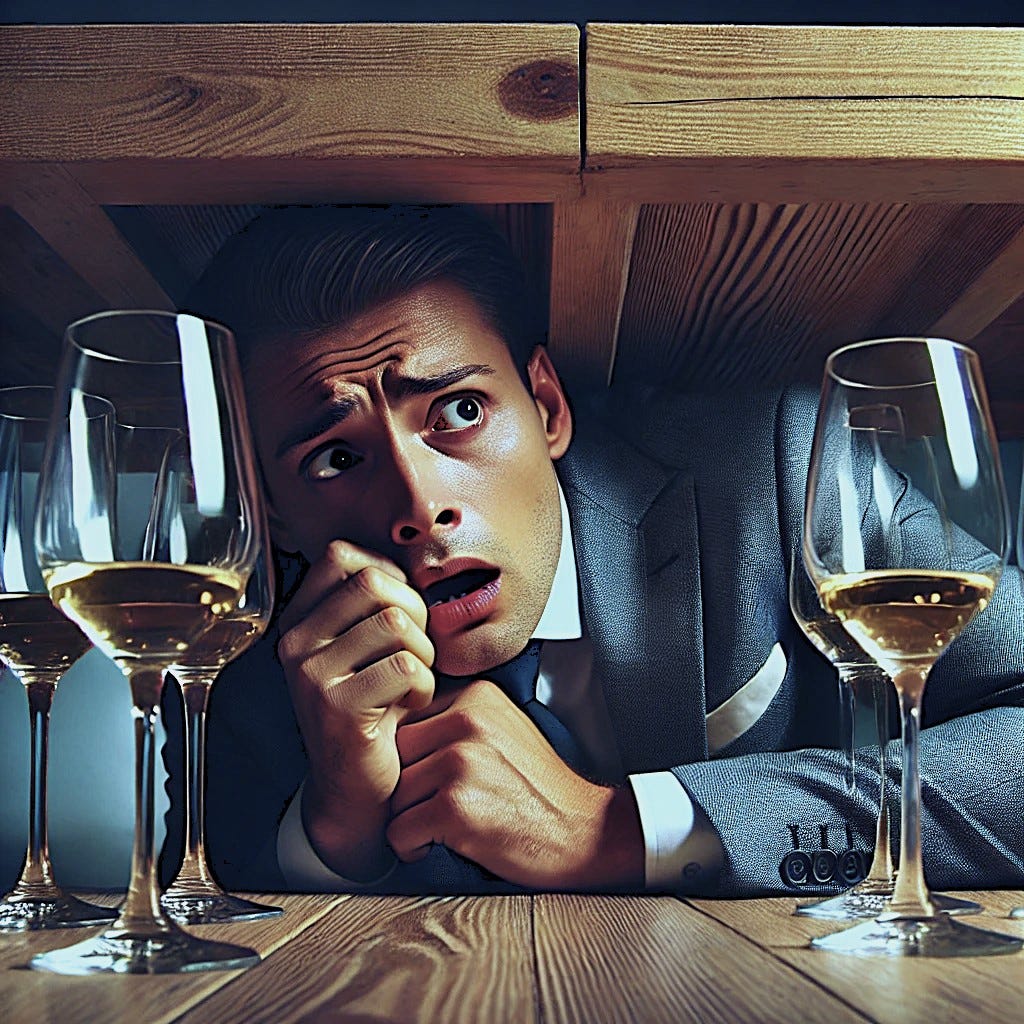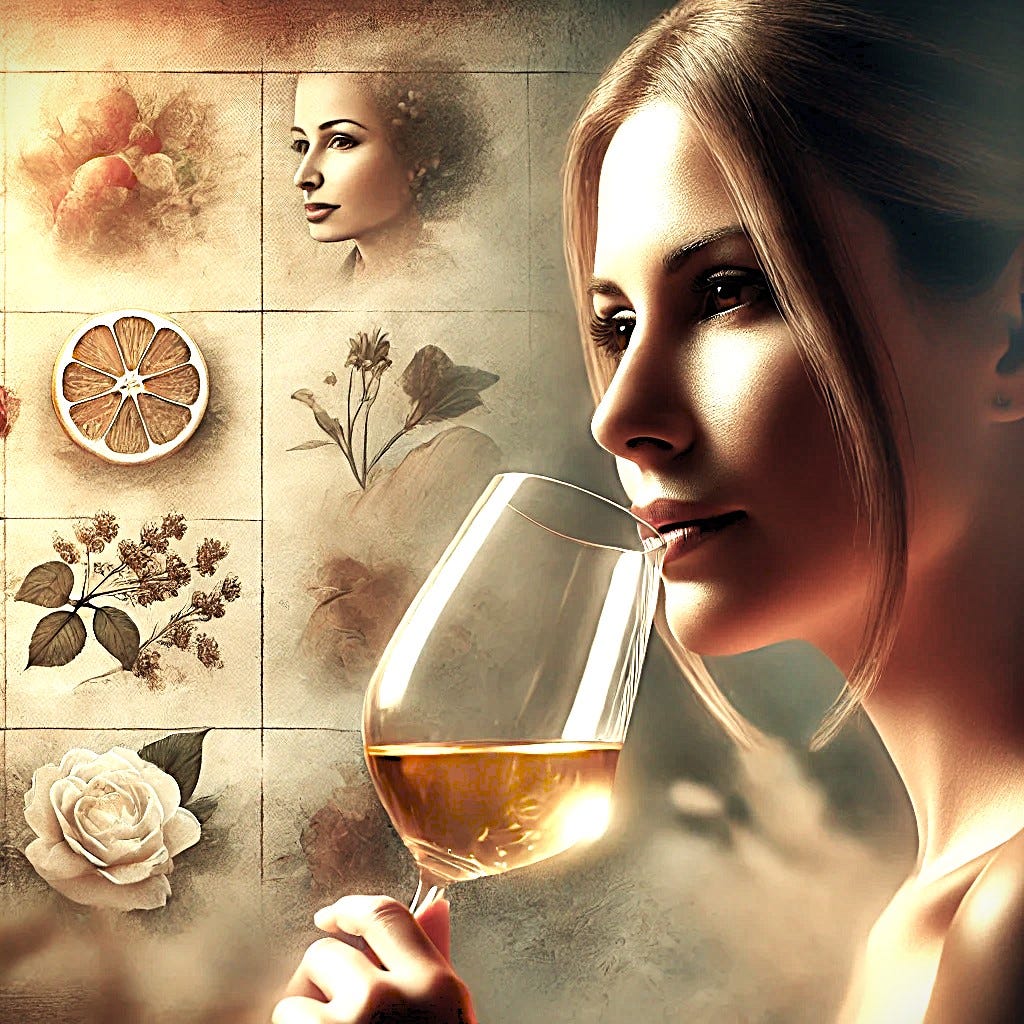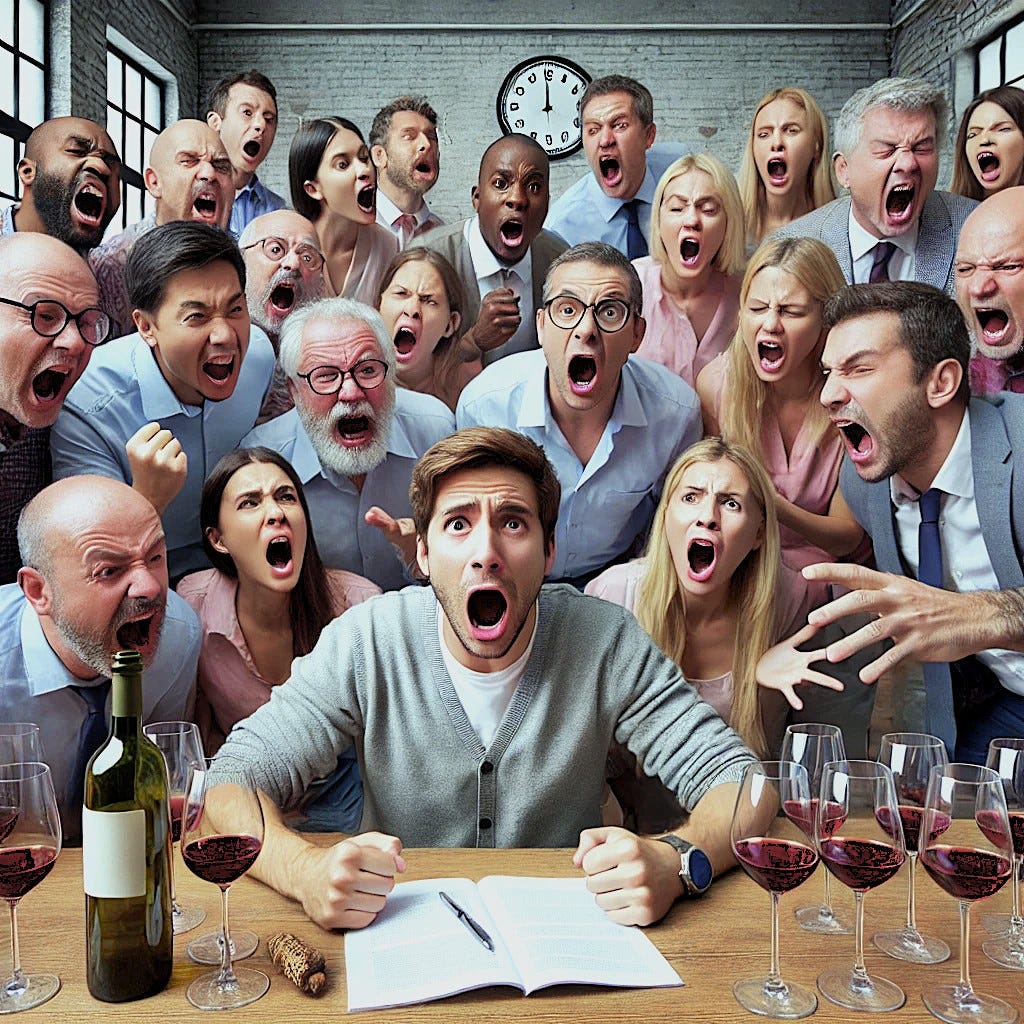The Mysteries of the Palate
Is it Mouth, Myth or merely the Mind?
For millions of years, wine enthusiasts and experts alike have swirled, sniffed, sipped, slopped, slurped and burped, using their palates to discern the nuances of a fine wine.
But what if we told you that the palate's role in tasting wine is not quite what we've been led to believe?
What you think you taste might just be an illusion.
Strap in tight as we take a rollercoaster ride into revelations about taste, smell and flavor and find out how our brains really figure out what's happening in our glasses, in the Indelible Wine Stain’s Mysteries of the Palate.
The Map of the Tongue
Once upon a time, a "tongue map" was taught in classrooms and wine tastings around the world, suggesting that different parts of the tongue were responsible for detecting sweet, sour, salty and bitter tastes.
The concept of the tongue map originated from a misinterpretation of early 20th-century research. In 1901, German scientist David P. Hänig published a paper titled "Zur Psychophysik des Geschmackssinnes" (The Psychophysics of Taste), in which he detailed experiments on the taste sensitivity of different parts of the tongue.
His work indicated small variations in taste sensitivity across the tongue, but these differences were minimal and did not imply exclusive taste zones.
In 1942, Hänig’s data was re-interpreted by the extremely interesting and somewhat exciting Harvard psychologist Edwin G. Boring, in his book "Sensation and Perception in the History of Experimental Psychology."
Boring's interesting, republished diagrams suggested that each part of the tongue was solely responsible for one of the four basic tastes (sweet, sour, salty, and bitter). This interpretation was incorrect but became widely disseminated through textbooks and educational materials, leading to the widespread belief in the tongue map.
The tongue map was largely discredited by the 1970s. In 1974, researcher Virginia Collings re-examined Hänig’s findings and confirmed that all parts of the tongue are capable of detecting all tastes, though there might be slight variations in sensitivity. Subsequent research has shown that taste receptors for all five basic tastes (including umami) are distributed throughout the tongue and other areas of the mouth and throat.
Despite being debunked, the tongue map continued to appear in educational materials and was taught in schools for many years, contributing to its persistence as a common misconception.
The Science of Taste Receptors
Over the last few decades, our understanding of taste has evolved significantly. As we just touched on, taste receptors are found not just on the tongue but throughout the mouth and upper throat. They are responsible for detecting sweet, sour, salty, bitter, and umami flavors.
They work in concert with our olfactory system, meaning that much of what we perceive as taste is actually smell. When wine is swirled in the mouth, it releases aromas that travel through the retro nasal passage to the nose, enhancing flavor perception through a process known as retro nasal olfaction.
So, hold on a gosh darn minute, what's really going on here?
Ok, so we did just cover this, just then, in the last few paragraphs.
Yes, I know, I apologize, I had a delivery at the front door
I understand, let’s try again…
Recent research has illuminated us, and we now know that tasting is less about the physical palate and more about our brain's interpretation of stimuli.
When we taste wine, we're not just processing flavors with our taste buds, we are actually experiencing a complex interaction of taste, aroma, and the textural feel of the wine, all influenced by our own memories and experiences.
Imagine sipping a Rheingau Riesling and being transported back to that afternoon at the vineyard and winery. That's your brain at work…
Our perception of taste is heavily tied to memory
When we recognize a flavor, it's not just our tongues reacting; it's our brains retrieving memories of past meals and drinks. This is why two people can taste the same wine and have completely different descriptions. One recalls a hint of peach while another, a note of apricot, based on their individual flavor memory banks.
Imagine that you grew up on an island with only rhubarb to eat, then everything would taste of rhubarb, as the only reference point would be rhubarb. Whether it be this rhubarb, that rhubarb, young rhubarb, old rhubarb, Seb’s rhubarb, Deb’s rhubarb, your rhubarb or my rhubarb.
Or of course, the “Mellingborough Root,” the Grand Cru of rhubarb, produced by the Ancient Order of the Monks of Rhubarbian.
The New Wave of “Trauma Triggering” in Wine Education
Wine tasters, enthusiasts and professionals alike are always on the lookout for new methods to refine their palate and enhance their sensory memory.
One unconventional approach that's making waves involves leveraging the psychological principle that, “traumatic memories are often more vividly recalled than happy ones.”
Research has consistently shown that humans remember traumatic events more sharply than mundane or even positive experiences. This phenomenon is deeply rooted in our evolutionary past, where remembering dangerous situations, such as encountering predators, was crucial for survival.
The brain processes these emotionally charged events with heightened activity in the amygdala and hippocampus, regions critical for emotion and memory formation. This heightened activity helps encode these memories more robustly and makes them easier to recall later.
Some case studies have recently surfaced to prove this idea, for example the origin story of the current “Underground Blind Tasting” champion.
Imagine you're Tim Geoffreys, it isn’t hard to do, enjoying a glass of Barolo at a celebratory business signing inside of his local bank. The mood is festive, the wine is flowing, and suddenly, bing-bang-bosh! Masked robbers burst in!
Amidst the chaos, Tim’s adrenaline spikes, he manages to crawl underneath a table, hiding out of sight, sipping on his glass of G. D. Vajra, leaving an indelible mark on his sensory memory.
Fast forward thirty years, and poor Tim can't sip a Barolo without instinctively ducking under a nearby table. His unique tasting tell has become legendary in the underground blind tasting circles. So, when Tim hits the deck, you know it's a Barolo and not a Barbaresco!
And what about the story of Elaine Croupat?
I’m glad that you asked!
Elaine was at a cozy wine bar, about to celebrate her engagement to her long-term partner, when she was unexpectedly dumped for a Yogalates Instructor…just as she tasted a sip of her Francois Mikulski, Charmes Premier Cru Meursault 2011.
The white burgundy was smooth, but the breakup was not.
To this day, a glass of any Chardonnay brings back not just notes of red apple, peach and vanilla but also a bitter finish of heartache, tears and resentment.
Ironically, Elaine's personal misery has turned into a professional asset, as she can identify even clonal selections of Chardonnay now, just by the intensity of their emotional resonance alone.
These tales sound to some as fabricated nonsense but never-the-less, provide some sort of evidence of the profound impact that experiences can have on how we perceive flavors.
The Method to the Madness
By purposefully creating distressing scenarios while tasting specific wines, some researchers are attempting to "reverse engineer" the way traumatic memory works to improve their ability to identify wines in blind tastings.
The theory is that the stress-induced surge of adrenaline and cortisol will enhance the memory of the wine's flavor profile, similar to how traumatic events are vividly remembered.
While this method taps into the brain's natural inclinations, it raises several ethical questions. Deliberately inducing stress or trauma, even in controlled environments, can have unintended psychological repercussions.
It's crucial that anyone considering this approach does so with a clear understanding of the potential risks and under the guidance of professionals if necessary. Find your local certified “Trauma Tasting Teacher” to go further.
The effectiveness of this method is still largely anecdotal. Some practitioners claim significant improvements in their ability to recall and identify wines, while others think that it is a pure work of fictional absurdness.
So, the next time you raise a glass, consider not just what's inside it, but what memories it may stir within you. Remember that your "palate" is more than just your tongue, it is a gateway to your memory and unique as a fingerprint.







